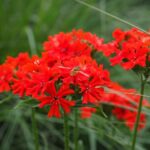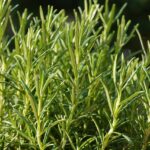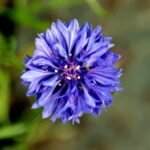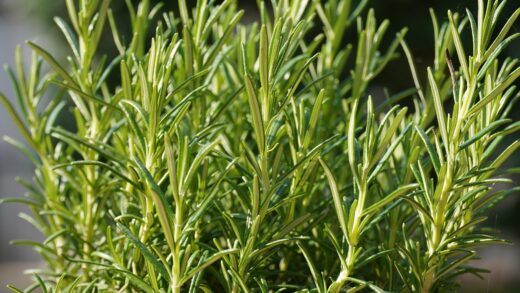The care of the Abyssinian gladiolus

The Abyssinian gladiolus, with its elegant, star-shaped white flowers and a deep purple blotch at the throat, is a truly captivating addition to any garden. Its delightful fragrance, which becomes more pronounced in the evening, adds another layer of sensory pleasure to its presence. Unlike its more common gladiolus cousins, this species boasts a more delicate and refined appearance, with gracefully arching stems that give it an almost ethereal quality. Native to the mountainous regions of East Africa, it brings a touch of the exotic to temperate gardens, thriving in the warmer months and producing a stunning late-season display. This plant, also known by its former botanical name Acidanthera murielae, is a cormous perennial that rewards the gardener with its unique beauty and relatively straightforward care requirements. Understanding its natural habitat and growth cycle is the key to successfully cultivating this jewel of the late summer and autumn garden. The journey of caring for the Abyssinian gladiolus begins with selecting the right location and providing the proper soil conditions to mimic its native environment. Proper planning and attention to its needs from the outset will ensure a vigorous plant that produces an abundance of its stunning, fragrant blooms year after year.
Site selection and soil preparation
Choosing the perfect spot for your Abyssinian gladiolus is the foundational step towards a successful blooming season. These plants are sun-lovers, requiring at least six to eight hours of direct sunlight each day to thrive and produce the energy needed for their spectacular flowers. A south-facing or west-facing location is often ideal, providing ample warmth and light throughout the day. While they adore the sun, providing them with some shelter from strong, gusty winds is also beneficial, as their tall, slender stems can be susceptible to damage. Planting them near a wall, a fence, or amongst other sturdy perennials can offer the necessary protection without compromising their access to sunlight.
Proper soil preparation is equally critical for the health and vigor of Gladiolus murielae. These corms demand well-draining soil to prevent rot, which is perhaps the most common issue faced by growers. Heavy clay soils that retain water for extended periods are particularly problematic and must be amended before planting. To improve drainage, incorporate generous amounts of organic matter such as compost, well-rotted manure, or leaf mold into the planting area. This not only enhances the soil structure but also provides a slow release of essential nutrients, supporting robust growth throughout the season.
The ideal soil pH for Abyssinian gladiolus is in the slightly acidic to neutral range, typically between 6.0 and 7.0. Most garden soils fall within this range, but it is always wise to conduct a soil test if you have any doubts. If your soil is too alkaline, you can amend it with elemental sulfur or pine needle mulch to lower the pH gradually. Conversely, if the soil is overly acidic, adding ground limestone can help to raise the pH to a more suitable level for nutrient uptake. A balanced pH ensures that the plant can efficiently access all the necessary micronutrients from the soil.
Before planting the corms, it is advisable to cultivate the soil to a depth of at least 20-25 centimeters. This deep cultivation loosens the soil, allowing the roots to penetrate easily and establish a strong foundation for the plant. Removing any weeds, rocks, or other debris from the planting bed is also a crucial step, as it eliminates competition for water and nutrients. A well-prepared bed provides the perfect starting environment, giving the Abyssinian gladiolus corms the best possible chance to sprout, grow strong, and ultimately grace your garden with their exquisite flowers.
More articles on this topic
Understanding the growth cycle
The life cycle of the Abyssinian gladiolus is a fascinating journey that begins with a dormant corm. These corms are essentially underground storage organs, packed with all the energy the plant needs to initiate growth in the spring. As the soil temperatures begin to warm, typically after the last frost, the corm awakens from its dormancy. A pointed shoot will emerge from the top of the corm, pushing its way up through the soil to reach the sunlight, while roots begin to develop from the basal plate at the bottom, anchoring the plant and absorbing water and nutrients.
Once the shoots have emerged, the plant enters a period of rapid vegetative growth. During this phase, the primary focus of the plant is to develop its long, sword-like leaves. These leaves are vital for photosynthesis, the process by which the plant converts sunlight into chemical energy. This energy fuels further growth and is essential for the development of the flower spike. It is crucial during this period that the plant receives adequate moisture and sunlight to build up the necessary reserves for the blooming phase.
The transition from vegetative growth to the reproductive, or flowering, phase typically occurs in mid to late summer. A slender, elegant flower spike will begin to emerge from the center of the leafy fan. Over several weeks, this spike will elongate, and the individual flower buds will develop along its length. The buds will swell and gradually begin to open, revealing the pristine white petals and the distinctive dark purple blotch at the center. The flowering period for an individual plant can last for several weeks, with the flowers opening sequentially from the bottom of the spike to the top.
After the last flower has faded, the plant enters its final life cycle stage for the season. The leaves will continue to photosynthesize for a while, sending energy back down to be stored in the corm for the following year’s growth. During this time, the parent corm will wither, and a new, large corm will form on top of it, along with several smaller cormels around its base. As autumn progresses and temperatures drop, the foliage will begin to yellow and die back, signaling that the plant is entering dormancy. In colder climates, this is the time to lift the corms from the ground for winter storage.
More articles on this topic
General maintenance and support
Throughout the growing season, consistent and thoughtful maintenance will ensure your Abyssinian gladiolus remains healthy and productive. One of the primary tasks is to keep the planting area free of weeds. Weeds compete with the plants for essential resources such as water, nutrients, and light, which can hinder their growth and reduce the quality and quantity of blooms. Regular, shallow cultivation with a hand fork or hoe is an effective way to control weeds, but be careful not to dig too deeply to avoid damaging the developing corms and roots just below the surface.
As the elegant flower spikes of the Abyssinian gladiolus grow taller, they may require some form of support, especially in windy or exposed locations. While their stems are wiry, they can still be prone to bending or breaking under the weight of the flowers or during heavy rain. Providing support early, before the spikes are fully grown, is the best approach. You can use individual bamboo canes or thin stakes placed near each plant, loosely tying the stem to the support with soft garden twine. Alternatively, for a larger clump, you can use grow-through plant supports or a system of stakes and twine to create a supportive grid.
Deadheading, or the removal of spent flowers, is another important maintenance practice. As the individual flowers on the spike fade, carefully pinch or snip them off. This not only keeps the plant looking tidy and attractive but also serves a more critical purpose. By removing the old flowers, you prevent the plant from expending its valuable energy on producing seeds. Instead, this energy is redirected back down to the corm, helping it to bulk up and store more resources for a more robust display the following year.
After the entire flower spike has finished blooming, you can cut the stalk back to the base of the plant. However, it is absolutely essential that you leave the foliage intact. The long, green leaves must be allowed to continue growing and photosynthesizing until they naturally begin to yellow and die back in the autumn. This period is crucial for replenishing the corm’s energy reserves. Cutting the leaves back prematurely will severely weaken the corm and will likely result in a poor or non-existent floral display in the subsequent season.
Seasonal care transitions
As the vibrant growth of summer gives way to the cooler, shorter days of autumn, the care routine for your Abyssinian gladiolus needs to adapt accordingly. This transition is crucial for preparing the plant for its winter dormancy and ensuring its survival for the next growing season. After the last of the fragrant blooms have faded, reduce the frequency of watering. The plant’s water requirements decrease significantly as its growth slows down. Allow the soil to dry out more between waterings, as overly moist soil in cooler temperatures can promote corm rot.
The primary focus of early autumn care is to allow the foliage to die back naturally. Resist the temptation to tidy up the plant by cutting back the green leaves, as they are working hard to gather solar energy to recharge the corm for the winter. This process of senescence, where the leaves gradually turn yellow and then brown, is a clear sign that the plant is transferring its energy stores from the foliage to the underground corm. This is a critical period that determines the strength and viability of the corm for the following year’s display.
In regions where winter temperatures regularly drop below freezing, lifting the corms for indoor storage is a non-negotiable step. The optimal time to do this is a week or two after the first light frost has caused the foliage to die back completely, or when the leaves have turned entirely brown. Carefully dig around the clump of corms with a garden fork, taking care to lift them from the soil without causing damage. Gently shake off the excess soil, but do not wash the corms, as this can introduce moisture that leads to rot in storage.
Once lifted, the corms need a period of curing to prepare them for storage. Cut the remaining stems and foliage down to about 2-3 centimeters above the corm. Place the corms in a warm, dry, and well-ventilated area for two to three weeks. This curing process allows the outer layers of the corm to dry and harden, which helps to prevent moisture loss and protect it from diseases during its long winter sleep. After curing, they will be ready for their final storage destination until the warmth of spring calls them back to life in the garden.
Companion planting strategies
Integrating Abyssinian gladiolus with other plants in a well-designed garden bed can elevate its beauty and create a more cohesive and dynamic display. When selecting companion plants, consider those that share similar requirements for sunlight and well-drained soil. Good companions can help to fill in the space at the base of the tall, slender gladiolus, hiding the sometimes-bare lower stems and creating a lush, multi-layered look. The key is to choose partners that complement, rather than compete with, the star of the show.
Late-season perennials are excellent choices to pair with Gladiolus murielae, as their bloom times will overlap, creating a spectacular autumnal finale in the garden. Plants like Japanese anemones (Anemone x hybrida), with their charming, poppy-like flowers, or asters, with their clouds of daisy-like blooms in shades of purple, blue, and pink, provide a beautiful contrast in form and color. The fine texture of Russian sage (Perovskia atriplicifolia) or the airy wands of Gaura also work wonderfully, adding movement and a softer texture to the planting scheme.
Ornamental grasses are another superb companion, offering a completely different texture that highlights the architectural form of the Abyssinian gladiolus. The delicate, feathery plumes of grasses like fountain grass (Pennisetum alopecuroides) or the fine, upright foliage of switchgrass (Panicum virgatum) can create a stunning backdrop. This combination is particularly effective in modern or naturalistic garden designs, where the interplay of form and texture is paramount. The grasses also help to provide some support for the gladiolus stems, reducing the need for staking.
For a more classic cottage garden feel, consider planting Abyssinian gladiolus amongst annuals and other summer-blooming bulbs. Low-growing annuals like verbena, salvia, or cosmos can be planted around the base of the gladioli to provide continuous color throughout the season. Planting them in drifts or clusters, rather than in rigid rows, allows them to weave through their companions, creating a more natural and integrated appearance. This method ensures that as the gladioli emerge and flower, they appear as a delightful surprise, poking their elegant, starry blooms through the surrounding foliage and flowers.
Container cultivation techniques
Growing Abyssinian gladiolus in containers is an excellent option for those with limited garden space, or for gardeners who wish to create stunning, fragrant displays on patios, balconies, or decks. This method also simplifies the process of overwintering the corms, as the entire pot can be moved to a protected location. The key to success in container cultivation lies in selecting the right pot and using a high-quality potting medium. Choose a container that is at least 30-40 centimeters deep and has ample drainage holes at the bottom to prevent waterlogging, which is a major threat to the corms.
The potting mix used for containers must be exceptionally well-draining. A standard, all-purpose potting compost can be improved by adding extra grit, perlite, or coarse sand to enhance its drainage capacity. A good ratio is approximately two parts potting compost to one part grit or perlite. This ensures that the corms are not sitting in overly wet conditions, which can quickly lead to rot. Avoid using garden soil in containers, as it is too heavy, compacts easily, and does not drain adequately for potted plants.
Planting the corms in a container follows the same principles as planting in the ground, but with a slightly different spacing. Plant the corms about 10-15 centimeters deep and space them a little closer together than you would in the garden, around 8-10 centimeters apart, to create a fuller, more impactful display. You can fit a good number of corms into a large pot, which will result in a dense and dramatic clump of flowers. After planting, water the pot thoroughly to settle the soil around the corms and then place it in a sunny, sheltered location.
Container-grown plants require more frequent watering and feeding than those grown in the ground, as the limited volume of soil dries out faster and nutrients are leached out more quickly. Check the moisture level of the compost regularly, especially during hot, dry weather, and water deeply whenever the top few centimeters feel dry to the touch. Begin feeding with a balanced liquid fertilizer every two to three weeks once the shoots are about 15 centimeters tall, and continue until the flowers begin to fade. This will provide the necessary nutrients for strong growth and abundant flowering.
📷 Flickr / Szerző: Stefano / Licence: CC BY-NC-SA 2.0

















